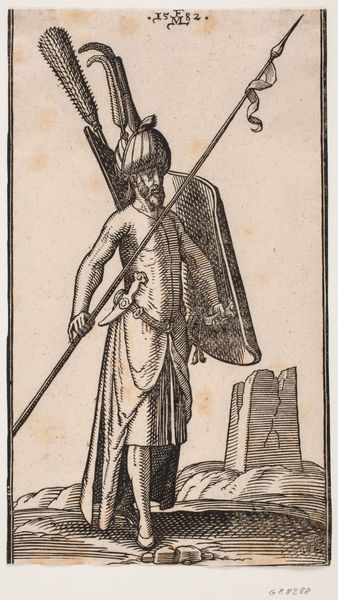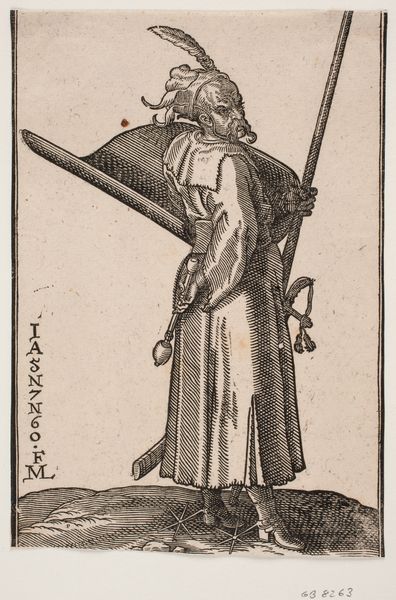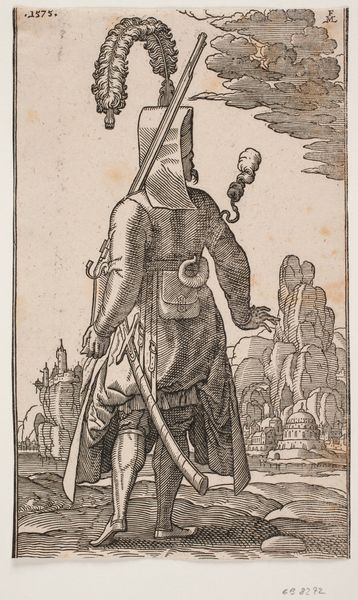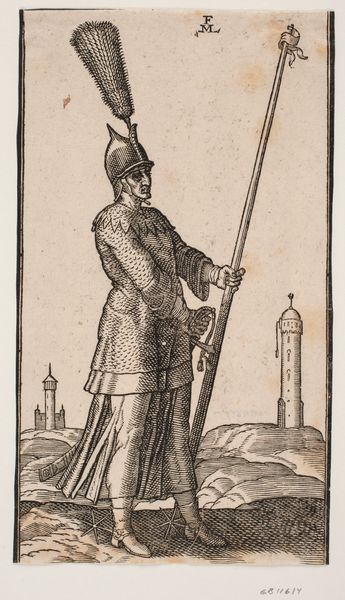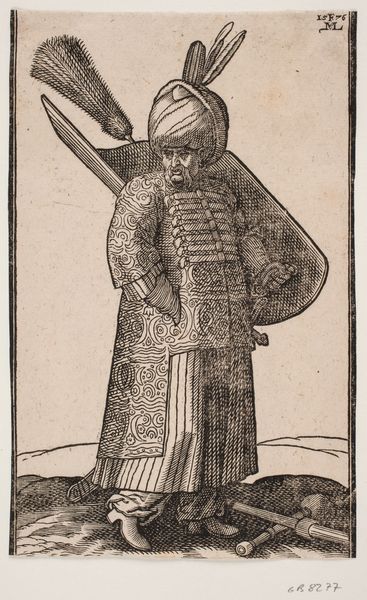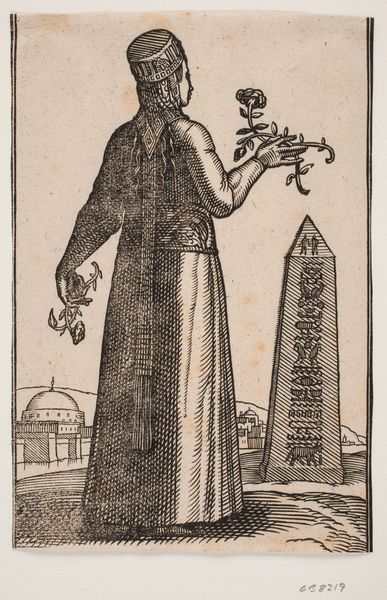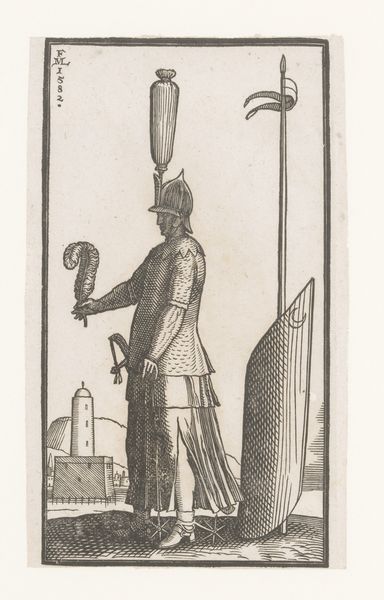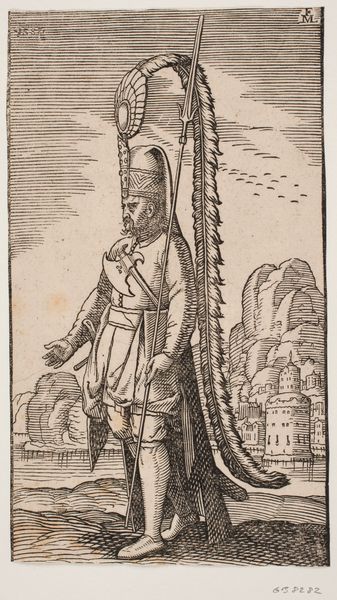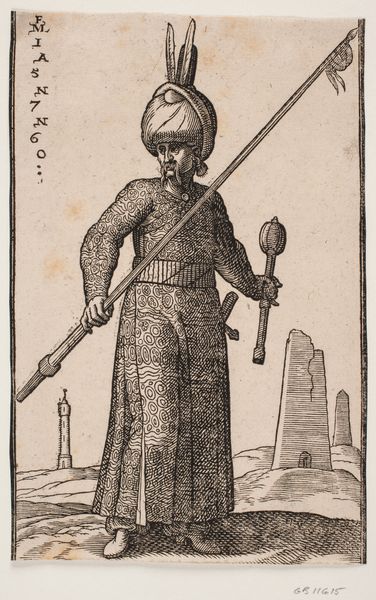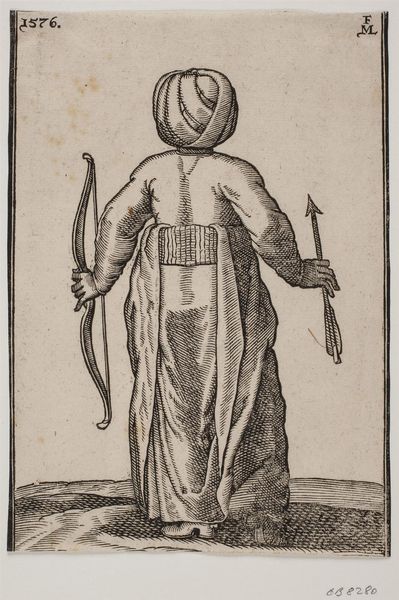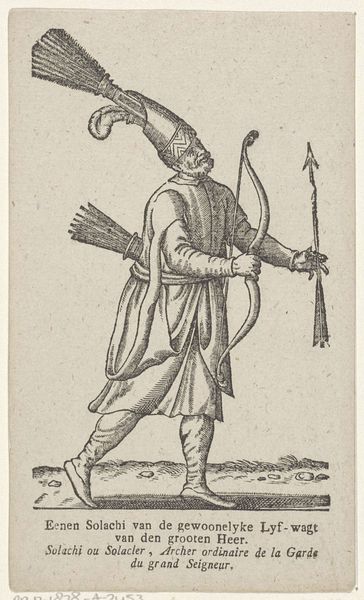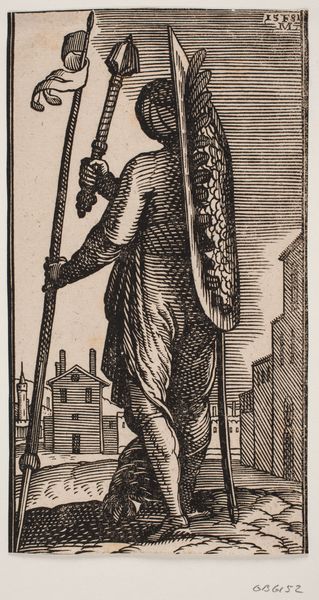
Stående soldat, frontalt set, hovedet vendt mod h.; han bærer bue over sin v. arm, pilekogger på ryggen og sværd ved sin v. side; han strækker koket sin h. arm bagud; i baggr. t.h. og t.v. to fæstningslignende bygninger 1576
0:00
0:00
print, woodcut, engraving
#
portrait
# print
#
mannerism
#
woodcut
#
engraving
Dimensions: 238 mm (height) x 135 mm (width) (bladmaal)
Melchior Lorck created this print of a standing soldier around 1576. Lorck, a Danish artist who traveled extensively, served in the court of Suleiman the Magnificent in Constantinople. This work reflects a fascination with the Ottoman Empire, a major political and cultural force in 16th-century Europe. The soldier’s elaborate attire is meticulously rendered. Note the flamboyant feathered headpiece, the patterned robe, and the bow and arrows, signifying his role as a warrior. The soldier’s pose, with his hand cocked at his waist, suggests a self-conscious display of power and masculinity. Lorck's travels allowed him to observe and document the diverse cultures he encountered, challenging the monolithic views of the “Orient” that were common at the time. However, we should still ask ourselves, to what extent does this image perpetuate stereotypes, and to what extent does it offer a nuanced portrayal of Ottoman identity? Consider how Lorck's personal experiences and artistic skill shape our understanding—and perhaps misunderstanding—of a world so different from his own.
Comments
No comments
Be the first to comment and join the conversation on the ultimate creative platform.
